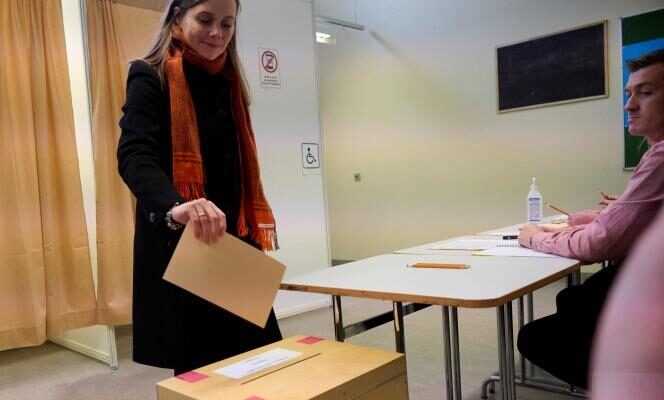Iceland began on Saturday September 25 a long night of legislative election results where the left-right coalition in power led by Prime Minister Katrin Jakobsdottir plays its majority, after a mandate marked by the return of stability.
The first results of the night, very partial (less than 10% of those registered), suggest that the government alliance is in a position to keep a majority, but with a retreat from the Left-Green movement of the head of government and a push to one of his allies, the Progress Party (center-right) of Sigurður Ingi Jóhannsson.
In the absence of out-of-ballot estimates in the country of only 370,000 inhabitants and 255,000 voters, more reliable results will not be known until late at night.
“I know the results will be complicated, it will be difficult to form a new government”, underlined the current tenant of Stjórnarrádid, the modest white house where the Icelandic heads of government sit.
“We’re going to have to look at how the government parties are going to do in total and what result we’re going to do. According to these preliminary results, we are losing ground a little and the progressives are increasing ”, she commented to Agence France-Presse (AFP).
A very fragmented Parliament
The Progress Party “Is back in the forefront of the political scene”, launched its leader Sigurður Ingi Jóhannsson in front of his activists. The formation of a new alliance risks raising the temperature in the land of fire and ice, like the volcanic eruption which has lasted for more than six months not far from the capital Reykjavik.
According to the latest polls, a record of nine parties out of the ten contending should share the seats of the Althingi – the Parliament for more than a thousand years – making the governmental alliance that could emerge from it particularly illegible.
With 33 elected out of 63, the current government alliance unites the Independence Party (conservative, 16 seats) of old Icelandic politician Bjarni Benediktsson, the Progress Party and the Left-Green movement of Mr.me Jakobsdottir.
This is only the second time since the 2008 financial crisis that ruined Icelandic banks that a government has completed its mandate. Against a background of mistrust of the political class inherited from the financial collapse and repeated scandals, five legislative elections were held between 2007 and 2017 in the country, which is not a member of the European Union.
“No tilting to the left”
The Independence Party seems assured to remain the largest political formation, with the first results which lean to the right.
“I don’t see any tilting to the left”, noted its leader Bjarni Benediktsson, former prime minister and current finance minister, who survived several scandals, including that of the Panama Papers in 2016. “The numbers are good, it’s a good start to the evening”, he told the microphone of public television RUV.
Even if the government coalition retained the majority, its renewal is far from certain, especially if more politically coherent alliances prove to be possible.
The game of coalitions is complicated by the large number of parties which should win several seats: the Social Democratic Alliance (left), the Pirates (libertarian), Reform (center-right), or the recently created Socialist Party.
